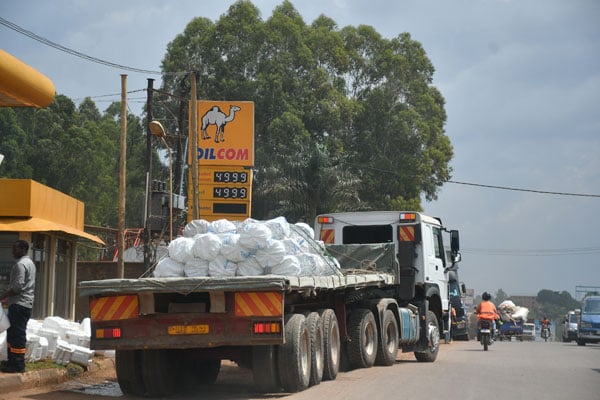Prime
Rate of commodity price increase drops

The reduction in the cost of petroleum and related products, which is the highest driver of prices, has seen a drop in commodity and service prices. Photo / File
What you need to know:
This is the third month in more than one and half years that commodity and services prices have been less volatile
An increase in supply of soap, petroleum and related products has seen the rate at which prices of commodities and services increase reduce during the period ended April.
Details released by Uganda Bureau of Statistics (Ubos) at the weekend indicate that an increase in supply and decline in prices for raw materials used for making cooking oil and laundry soap saw a decline in inflation to 8 percent in the period ended April from 9 percent in March.
This is the third month inflation, or the rate at which prices of commodities and services increase, has been moving southwards.
However, the rate remains above Bank of Uganda target of 5 percent.
Commodity and service prices had been increasing throughout 2022, peaking to record levels in the last quarter of the year.
Speaking during release of the Consumer Price Index in Kampala at the weekend, Mr Edgar M Niyimpa, the Ubos principle statisticians price statistics, said during April, there was “a decrease in prices and increased supply of crude palm oil from Malaysia, a key ingredient in the manufacture of laundry soap, cooking oil and other processed food items”, noting that the main driver of the decline in inflation was laundry soap, which fell to -6 percent and refined cooking oil, which declined to -9 percent from 2.8 percent in March.
Similarly, the rate of increase for sugar prices reduced, falling to 31.4 percent from 38.7 percent.
Core inflation, which Bank of Uganda uses to measure movement of commodity and service prices, fell to 6.8 percent from 7.6 percent in March, while food crops and related items inflation slowed to 25.3 percent from 26.7 percent in March due to a fall in whole cassava inflation to 51.7 percent from 65.8 percent, tomatoes (to 26.3 percent from 33.3 percent) and egg plants and bitter tomatoes (to 13.0 percent from 30.1 percent).
Other food crops that posted reductions included rice, whose inflation fell to 42.2 percent from 50.1 percent.
Energy and Utilities inflation, which includes petroleum products, slowed to 2.1 percent from 4.4 percent in March due to a fall in the movement of petrol inflation, which slowed to -2.9 percent from 0.2 percent, while diesel inflation reduced to 7.3 percent from 16.9 percent in March.
Geographically, Arua registered the highest rate of price increase during April, with inflation standing at 11.2 percent, followed by Fort Portal at 10.4 percent, while Kampala High Income registered the lowest inflation of 6.5 percent.
Average retail prices of selected items
Commodity | Quantity | Price (April 2022) | Price (April 2023) |
Matooke (bunch) | 1 Kg | Shs1,166 | |
Dry beans | 1 Kg | Shs3,020 | Shs5,081 |
Irish Potatoes | 1 Kg | Shs1,617 | Shs2,295 |
Sweet Potatoes | 1 Kg | Shs945 | Shs1,213 |
Groundnuts (pounded) | 1 Kg | Shs6,154 | Shs8,348 |
Tomatoes | 1 Kg | Shs2,068 | Shs2,694 |
Pineapple | 1 Kg | Shs1,372 | Shs1,462 |
Maize flour | 1 Kg | Shs2,264 | Shs3,357 |
Diesel | 1 Litre | Shs4,704 | Shs5,089 |
Petrol | 1 Litre | Shs5,207 | Shs5,086 |




